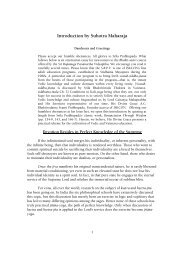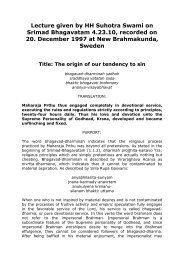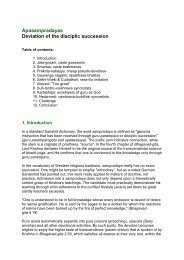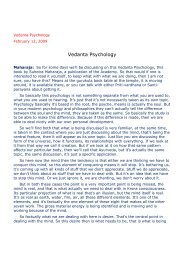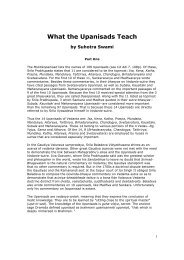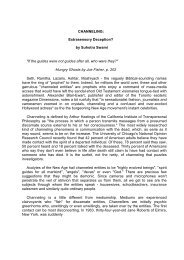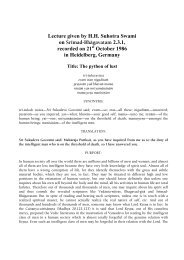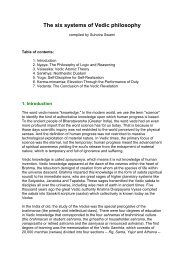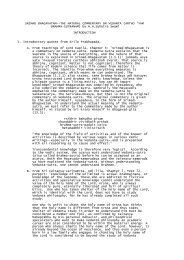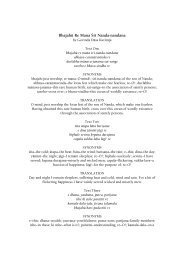BG In Essence - Suhotra Maharaja Archives
BG In Essence - Suhotra Maharaja Archives
BG In Essence - Suhotra Maharaja Archives
- No tags were found...
Create successful ePaper yourself
Turn your PDF publications into a flip-book with our unique Google optimized e-Paper software.
Notes:SB 1.7.10 (the Atmarama verse):SB 10.2.32:All different varieties of atmaramas (those who take pleasure in atma,or spirit self), especially those established on the path of selfrealization,though freed from all kinds of material bondage, desire torender unalloyed devotional service unto the Personality of Godhead.This means that the Lord possesses transcendental qualities andtherefore can attract everyone, including liberated souls.O lotus-eyed Lord, although nondevotees who accept severe austeritiesand penances to achieve the highest position may think themselvesliberated, their intelligence is impure. They fall down from theirposition of imagined superiority because they have no regard for yourlotus feet.Focus on Bg 10.10 purportBuddhi means intelligence, and yoga means mystic activities or |mystic elevation.Notes:1. Sri Krsna, as Paramatma in the heart of all beings, is the source of buddhi.Becoming conscious of Him is the goal of yoga.Quotation from the Purport of Bg 2.39:This buddhi-yoga is clearly explained in Chapter Ten, verse ten, asbeing direct communion with the Lord, who is sitting as Paramatma ineveryone's heart.2. According to Renunciation Through Wisdom, page 15, the essence of buddhi-yogais given in Bhagavad-gita Chapter 2, texts 39-40. That essence may be expressed injust one sentence from text 39: "O son of Prtha, when you act in such knowledge youcan free yourself from the bondage of works." Hence, buddhi-yoga is action inknowledge of Krsna--knowledge that is revealed within the heart by Paramatma.3. Such action in knowledge of Krsna may be executed in three ways under Vedicinjunction. The Bhagavad-gita consists of Krsna's explanations of these three ways ofbuddhi-yoga.Quotation from Renunciation Through Wisdom, page 16:At the same time the Gita points out how to execute buddhi-yogathrough jnana, or analytical study, and karma, or fruitive action. Whenbuddhi-yoga is executed in conjunction with fruitive activity, it isknown as karma-yoga. Similarly, when it is executed in conjunction



